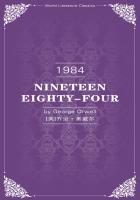At the hazard of wearying you this tale of vehementemotions must be prefaced by a discourse on geometry.
Nature moves in circles; Art in straight lines. The naturalis rounded; the artificial is made up of angles. A man lostin the snow wanders, in spite of himself, in perfect circles;the city man’s feet, denaturalized by rectangular streetsand floors, carry him ever away from himself.
The round eyes of childhood typify innocence; thenarrowed line of the flirt’s optic proves the invasion of art.
The horizontal mouth is the mark of determined cunning;who has not read Nature’s most spontaneous lyric in lipsrounded for the candid kiss?
Beauty is Nature in perfection; circularity is its chiefattribute. Behold the full moon, the enchanting golf ball,the domes of splendid temples, the huckleberry pie, thewedding ring, the circus ring, the ring for the waiter, andthe “round” of drinks.
On the other hand, straight lines show that Nature hasbeen deflected. Imagine Venus’s girdle transformed into a“straight front”!
When we begin to move in straight lines and turn sharpcorners our natures begin to change. The consequence isthat Nature, being more adaptive than Art, tries to conformto its sterner regulations. The result is often a rather curiousproduct—for instance: A prize chrysanthemum, woodalcohol whiskey, a Republican Missouri, cauliflower augratin, and a New Yorker.
Nature is lost quickest in a big city. The cause isgeometrical, not moral. The straight lines of its streetsand architecture, the rectangularity of its laws and socialcustoms, the undeviating pavements, the hard, severe,depressing, uncompromising rules of all its ways—evenof its recreation and sports—coldly exhibit a sneeringdefiance of the curved line of Nature.
Wherefore, it may be said that the big city hasdemonstrated the problem of squaring the circle. Andit may be added that this mathematical introductionprecedes an account of the fate of a Kentucky feud thatwas imported to the city that has a habit of making itsimportations conform to its angles.
The feud began in the Cumberland Mountains betweenthe Folwell and the Harkness families. The first victimof the homespun vendetta was a ’possum dog belongingto Bill Harkness. The Harkness family evened up thisdire loss by laying out the chief of the Folwell clan. TheFolwells were prompt at repartee. They oiled up theirsquirrel rifles and made it feasible for Bill Harkness tofollow his dog to a land where the ’possums come downwhen treed without the stroke of an ax.
The feud flourished for forty years. Harknesses wereshot at the plough, through their lamp-lit cabin windows,coming from camp-meeting, asleep, in duello, sober andotherwise, singly and in family groups, prepared andunprepared. Folwells had the branches of their familytree lopped off in similar ways, as the traditions of theircountry prescribed and authorized.
By and by the pruning left but a single member of eachfamily. And then Cal Harkness, probably reasoning thatfurther pursuance of the controversy would give a toodecided personal flavour to the feud, suddenly disappearedfrom the relieved Cumberlands, baulking the avenginghand of Sam, the ultimate opposing Folwell.
A year afterward Sam Folwell learned that his hereditary,unsuppressed enemy was living in New York City. Samturned over the big iron wash-pot in the yard, scraped offsome of the soot, which he mixed with lard and shined hisboots with the compound. He put on his store clothes ofbutternut dyed black, a white shirt and collar, and packeda carpet-sack with Spartan lingerie. He took his squirrelrifle from its hooks, but put it back again with a sigh.
However ethical and plausible the habit might be in theCumberlands, perhaps New York would not swallow hispose of hunting squirrels among the skyscrapers alongBroadway. An ancient but reliable Colt’s revolver that heresurrected from a bureau drawer seemed to proclaimitself the pink of weapons for metropolitan adventure andvengeance. This and a hunting-knife in a leather sheath,Sam packed in the carpet-sack. As he started, muleback,for the lowland railroad station the last Folwell turned inhis saddle and looked grimly at the little cluster of whitepineslabs in the clump of cedars that marked the Folwellburying-ground.















